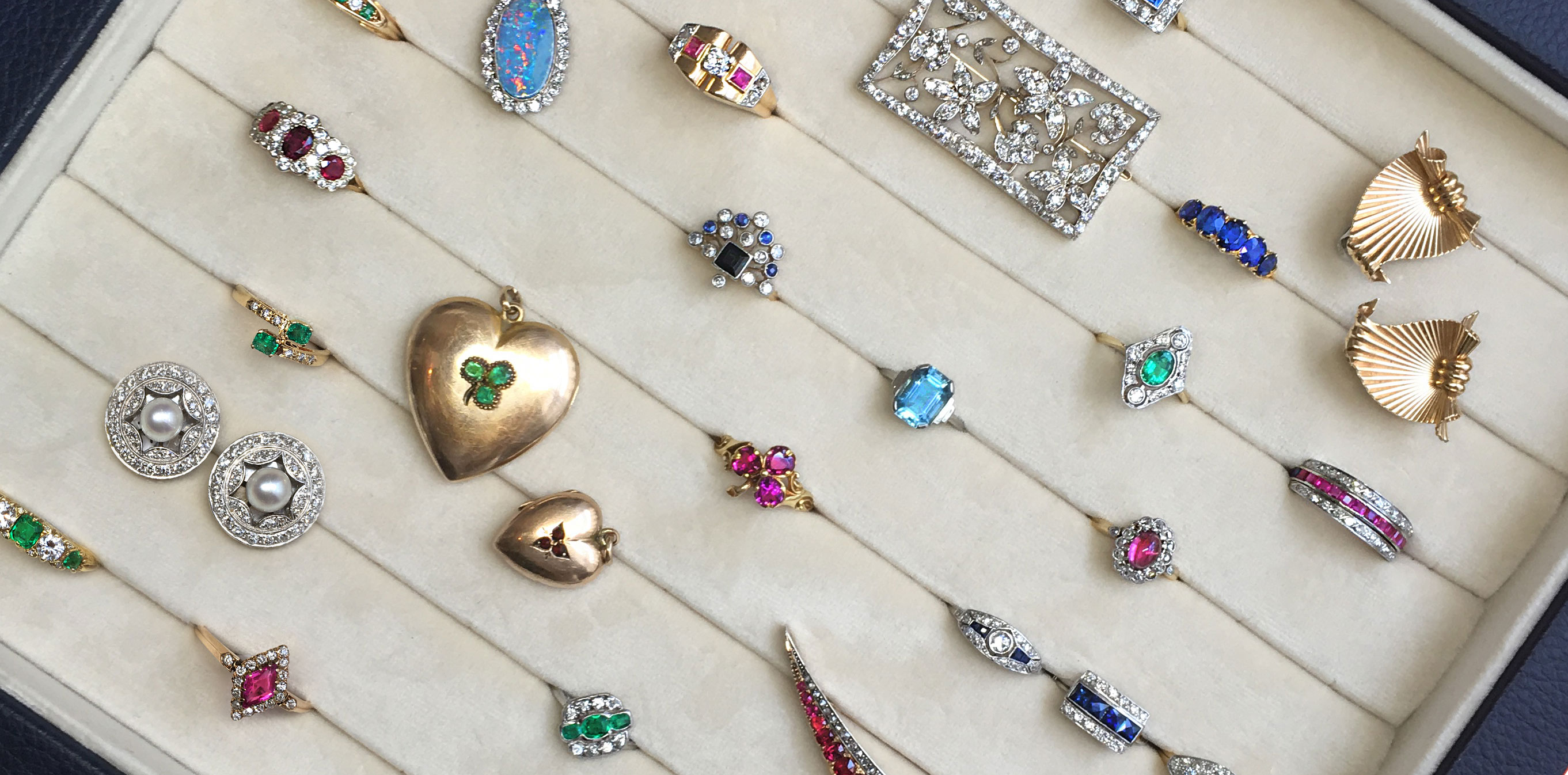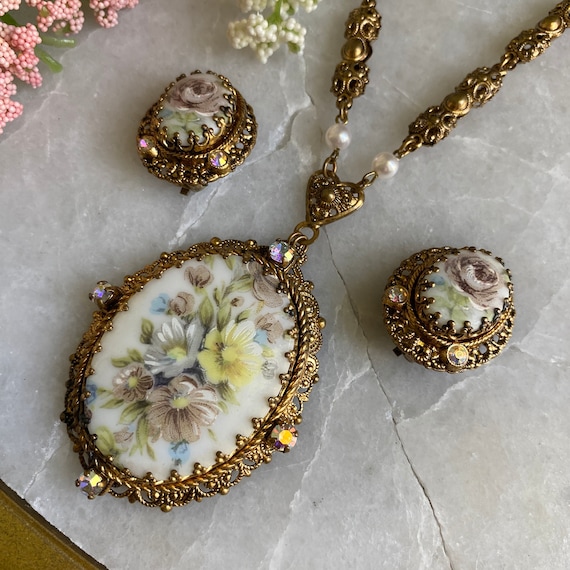Unveiling the Allure of Antique Jewelry: Comprehending Its Different Designs
Vintage precious jewelry functions as a captivating home window into the past, offering understandings right into the cultural and artistic nuances of different eras. Each design, from the emotive details of Victorian precious jewelry to the fluid sophistication of Art Nouveau, envelops the sentiments and innovations of its time. The subsequent luxury of Edwardian layouts and the striking kinds of Art Deco further show this advancement. Yet, as we explore these distinctive styles, one should consider exactly how the value of these items goes beyond plain aesthetic appeals, welcoming a deeper assessment of their historic and emotional resonance.
Victorian Age Precious Jewelry
The appeal of Victorian Period fashion jewelry hinges on its elaborate workmanship and profound importance, mirroring the societal values and psychological currents of the moment. Covering from 1837 to 1901, this period was defined by a fascination with nature, mourning, and romanticism, which profoundly affected fashion jewelry layout. Jewelry pieces usually featured intricate motifs, such as flowers, animals, and complex fretwork job, crafted from products like gold, silver, and gems.

In addition, the technical improvements of the Industrial Revolution permitted more intricate layouts and the usage of new materials, such as rubies and pearls. This democratization of luxury made fashion jewelry much more available to the center class, bring about a proliferation of diverse designs. Generally, Victorian Era precious jewelry stays a fascinating testament to the complex interplay of art, feeling, and societal norms throughout a transformative historical duration.
Art Nouveau Creations
Defined by its natural types and flowing lines, Art Nouveau jewelry arised in the late 19th and early 20th centuries as a response to the mass production and stiff styles of the coming before eras. This imaginative movement looked for to embrace nature, incorporating components such as blossoms, leaves, and creeping plants right into the layouts. Art Nouveau items often featured unbalanced structures, highlighting a sense of movement and fluidness.

Making use of innovative methods, such as enameling and the unification of glass, additional distinguished Art Nouveau fashion jewelry from its precursors. The motion ultimately celebrated originality and creative expression, making each piece a distinct work of art. Therefore, Art Nouveau developments remain to captivate enthusiasts today, embodying an unique mix of sophistication and nature that continues to be ageless.
Edwardian Period Pieces
Throughout the early 20th century, the Edwardian duration witnessed an impressive advancement in precious jewelry design, marked by a focus on beauty and visit our website opulence. This period, named after King Edward VII, covered from 1901 to 1910 and is defined by the detailed craftsmanship and fragile aesthetics that specify its items.
Jewelry from this period typically features platinum setups, a product that permitted finer and even more elaborate layouts, improving the play of light against the treasures. Making use of rubies was prevalent, usually set up in intricate themes such as fretwork and flower patterns. Edwardian jewelry also welcomed the use of pearls, which included a soft, luminous high quality to the pieces.
Breastpins, necklaces, and jewelry ended up being popular, showcasing the period's fondness for romantic and wayward designs. The "garland design," which included the usage of ribbon-like concepts, was especially preferred, reflecting the naturalistic influences of the moment. Furthermore, items typically incorporated colored gems to produce striking contrasts, more boosting their visual charm. On the whole, Edwardian period precious jewelry continues to be a testimony to a time when creativity and elegance reigned supreme on the planet of adornment.

Art Deco Designs
Arising in the 1920s and prospering with the 1930s, Art Deco creates represent a strong departure from the elaborate designs of previous eras, accepting geometric shapes, structured types, and vibrant colors. Identified by a sense of modernity, this layout motion attracted inspiration from various sources, his explanation including cubism, ancient Egyptian themes, and the dynamic aesthetics of the maker age.
Art Deco jewelry often includes bold contrasts, integrating products such as platinum, gold, and colored gemstones to develop striking visual effects. The usage of elaborate patterns and motifs, consisting of zigzags, chevrons, and floral elements, showcases the workmanship of the moment. Significantly, the era also saw the introduction of brand-new strategies such as enamel work and making use of synthetic rocks, broadening the possibilities for imaginative expression.
Pieces from this period often radiate glamour and refinement, making them highly demanded by collection agencies and enthusiasts alike. Art Deco jewelry serves not only as a reflection of its time however additionally as a testament to the enduring allure of its innovative styles. It holds a considerable area in the history of antique jewelry, commemorated for its special style and social significance.
Retro and Mid-Century Styles
Retro and Mid-Century designs, covering from the 1940s to the 1960s, stand for a lively period in fashion jewelry design that shows the positive outlook and technology of post-war culture. antique jewelry. Identified by vibrant designs and the use of innovative products, this age saw a departure from the intricate outlining of previous designs, welcoming rather an extra lively and abundant aesthetic
Precious jewelry from this period commonly features big, vibrant gems, including citrine, aquamarine, and tourmaline, embeded in yellow gold-- a product that gained importance due to its warm tones and pliability. The layouts often integrated wayward concepts such as flower patterns, abstract types, and geometric click for more info shapes, recording the spirit of modernity and freedom that defined the era.
Remarkable developers like Cartier and Van Cleef & Arpels made considerable payments to Retro and Mid-Century styles, producing pieces that incorporated workmanship with imaginative style. In addition, the influence of Hollywood glamor during this time around caused an increased demand for statement jewelry, making it an essential device for the fashionable elite (antique jewelry). Accumulating Retro and Mid-Century fashion jewelry today provides enthusiasts a glimpse right into a transformative period in history, identified by creative thinking and social advancement
Verdict
The expedition of antique jewelry reveals a dynamic spectrum of styles, each embodying the social and artistic nuances of its respective age. From the psychological depth of Victorian designs to the innovative spirit of Retro items, these artifacts function as vital historic stories. Recognizing the distinctive qualities of each period enhances appreciation for the workmanship and significance behind these adornments, strengthening their standing as not just attractive products but also useful connections to the past.